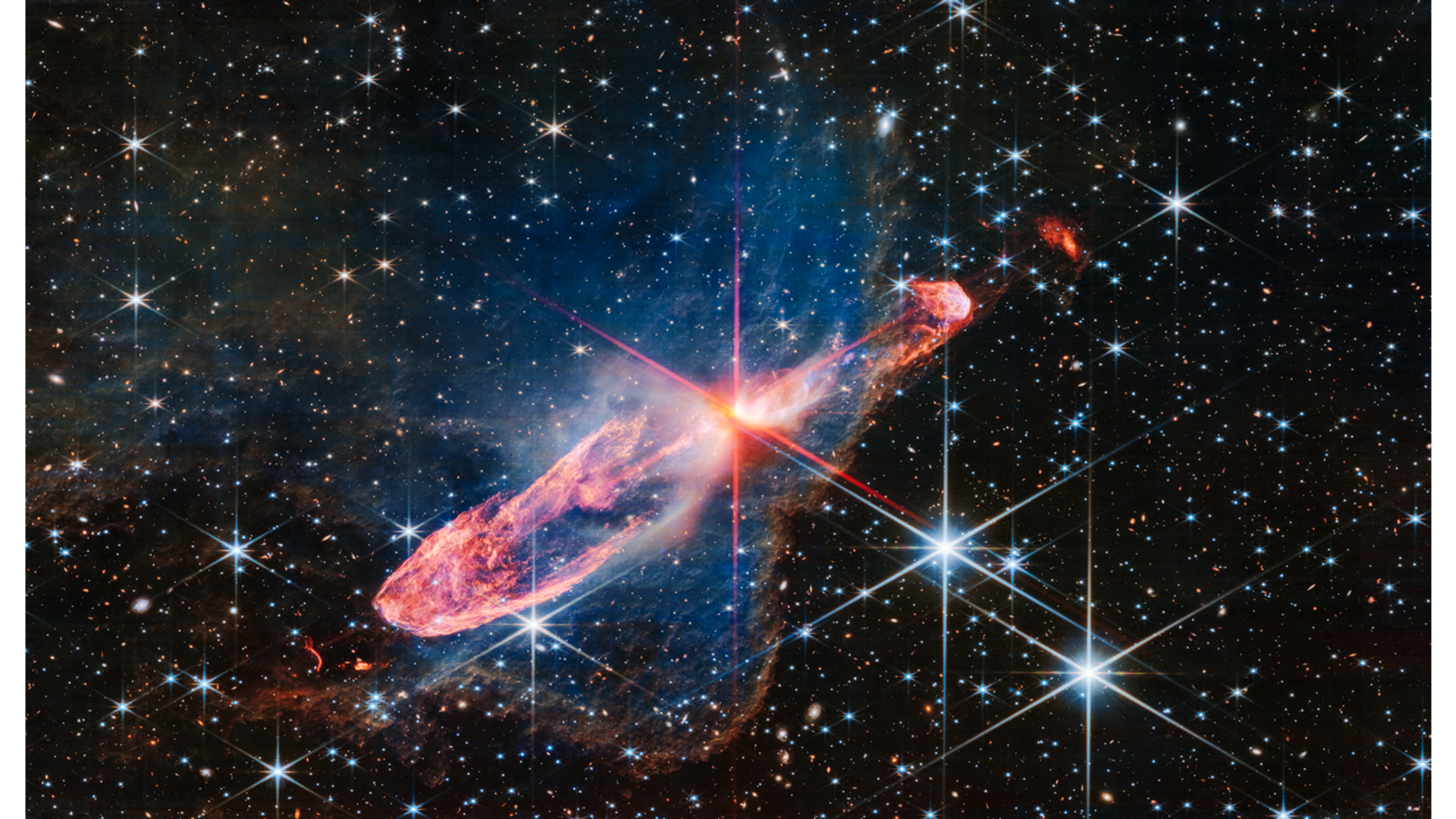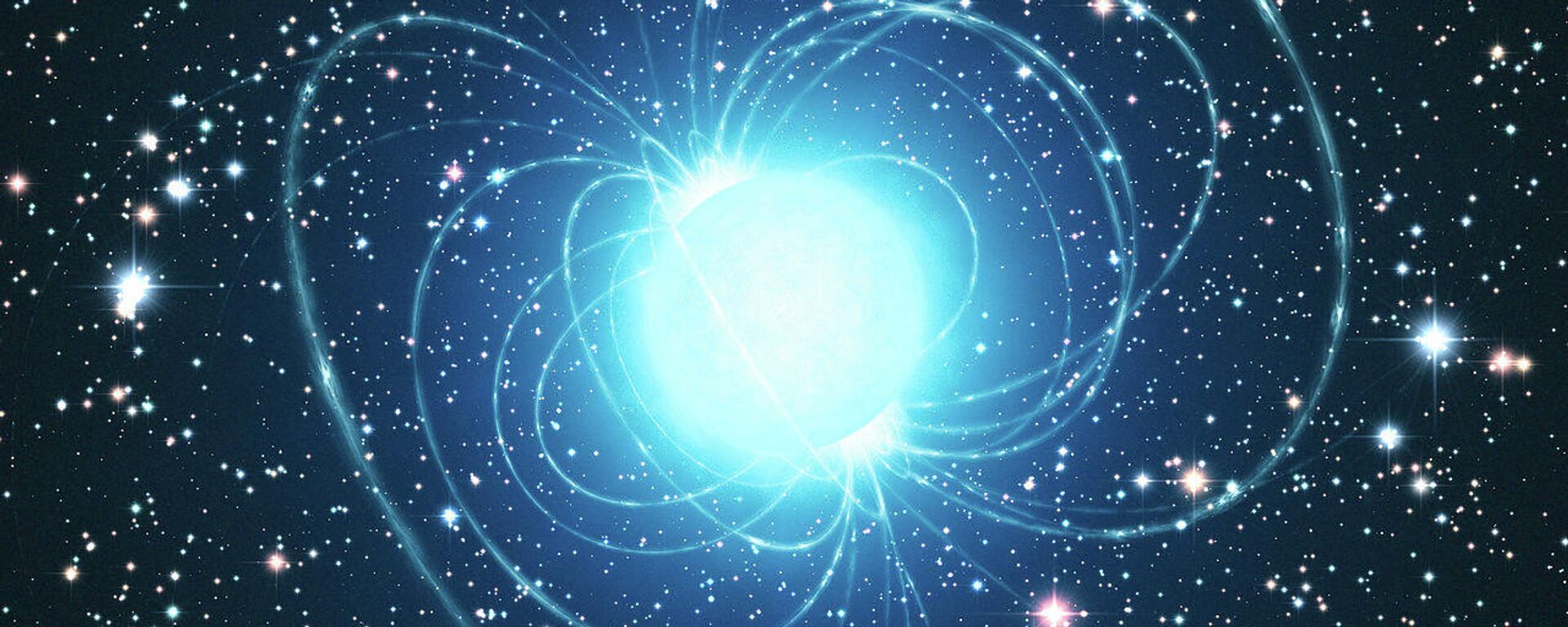Photo: NASA Releases Stunning Image of Newborn Binary Star System

© NASA . NASA, ESA, CSA
Subscribe
The latest stunning image snapped by NASA’s James Webb Space Telescope (JWST) shows a pair of stars still in the process of formation.
The two protostars are known as Herbig-Haro 46/47, a designation for glowing nebulae like those seen in the image that derives their names from the two astronomers who first described them in the 1940s: George Herbig and Guillermo Haro.

NASA’s James Webb Space Telescope has captured a tightly bound pair of actively forming stars, known as Herbig-Haro 46/47, in high-resolution near-infrared light. Look for them at the center of the red diffraction spikes. The stars are buried deeply, appearing as an orange-white splotch. They are surrounded by a disk of gas and dust that continues to add to their mass.
© NASA . NASA, ESA, CSA
HH46/47 are about 1,470 light-years from Earth and are only a few thousand years old - infants in the timespan of the universe. The duo are indecipherable in the photo: both are enveloped in the glowing gas cloud that gave birth to them and which they will continue to consume as they grow and mature. Eventually, following a process that will take millions of years, their solar system will be as dust-free as our own, possibly with planets coalescing out of some of the dust and debris.
Much like human infants, these baby stars have the tendency to eat too much at once and then throw some of it back up.
“The two-sided orange lobes were created by earlier ejections from these stars,” NASA says of the image. “The stars’ more recent ejections appear in a thread-like blue, running along the angled diffraction spike that covers the orange lobes.”
According to the US space agency, the entire image was captured using only infrared light, which is electromagnetic radiation emitted during heat transfer. It was originally received by NASA scientists in black-and-white, with the colors added to enhance the frame and get further scientific information from it.
The Webb Telescope is located in a distant Earth orbit that affords it an unparalleled view of the universe.
Recently, it passed its first anniversary of sending back images, which are so distant (and thus so far back in time) as to show some of the very first galaxies and black holes that formed after the Big Bang.


